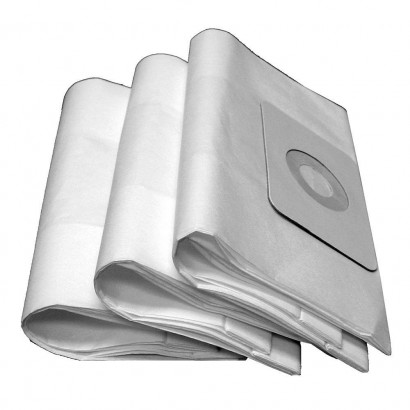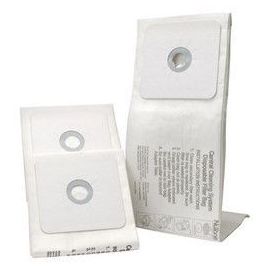Guide to the Best Vacuums for Allergies
Vacuums That Are Best for Allergies
Allergy sufferers react to indoor and outdoor allergens. One of the best ways to reduce sneezing, coughing, and headaches caused by allergies is to use an effective vacuum cleaner. Allergens are found:

- Deep in pile carpets
- On top of other floors
- Laying on stairways
- Clinging to window blinds
- On the top and bottom of ceiling fans
Dust, dirt, and pet dander can also gather in corners, on shelves, and in closets. Attachments are available for any of these cleaning situations. By cleaning all of the above areas regularly, you can see a reduction in your allergy symptoms.
What is HEPA Filtration?
A high-efficiency particulate air (HEPA) vacuum filter traps large amounts of small particles. These tiny pieces of dust, dirt, pet dander and other allergens are not picked up by other types of vacuums. Vacuums without HEPA filtration recirculate these contaminants back into your home’s air and into your nostrils. The lack of complete cleaning impacts people with allergies and other respiratory conditions. The best filtration is true HEPA filtration in a high-quality home vacuum cleaner.
How can you tell an absolute or true HEPA filter? Read the vacuum’s manual and filter label to see if it meets the requirements. This type of filtration must trap at least 99.97% of particles as small as 0.3 microns. You can expect to pay more for an absolute or true HEPA filter, but it will be well worth it.
Does HEPA Filtration Matter?
 HEPA filtration has been proven to help relieve allergy symptoms. Homeowners, children, elderly parents, pets, and visitors alike are affected by allergens. Breathing clean air in homes is a vital component for healthy living. In addition to the allergens already mentioned, there are dust mites, mold spores, cigarette smoke, chemical spills, and pollen. The best way to lessen their effects on people and pets is to use a HEPA filter.
HEPA filtration has been proven to help relieve allergy symptoms. Homeowners, children, elderly parents, pets, and visitors alike are affected by allergens. Breathing clean air in homes is a vital component for healthy living. In addition to the allergens already mentioned, there are dust mites, mold spores, cigarette smoke, chemical spills, and pollen. The best way to lessen their effects on people and pets is to use a HEPA filter.
There are HEPA-type filters and true HEPA filters. If you don’t check filter specifications carefully, you may buy the wrong one. Many types of HEPA filters capture only 85% to 90% of all allergens. The percentage can be smaller or particles for 1 micron and smaller. True HEPA filtration systems capture almost 100% of all allergens. That small difference of 10% to 15% makes a significant difference for allergy and asthma patients.
It’s interesting to note that most household allergens are 0.3 microns or larger. The easiest way to tell the difference between a true HEPA filter and a HEPA-type filter is true HEPA filters have serial numbers printed on them, while HEPA-type filters do not. There are plenty of them in your house, basement, and garage that are even smaller in size. This is where the power and efficiency of a vacuum with true HEPA filters really stands out.
Filtration Is Imperative for Allergy Sufferers
If you or other family members have trouble breathing at home, don’t blame it all on outdoor pollen. Pollen is a significant factor in many people’s respiratory problems, and it can come into your house. It enters on clothes, shoes, pets, and the wind. In case you haven’t been told by anyone, filtration is imperative for allergy sufferers.
Yes – strong filtration is a must. You can buy an upright, canister, or central vacuum cleaner designed for HEPA performance. They come in either bag or bagless models. Here’s the difference in vacuums. Standard vacuums typically filter air through the vacuum bag. This means some air is pumped back into the room and not cleaned. HEPA vacuums are sealed to capture incoming and outgoing air.

Let us ask you, are you vacuuming your home effectively? Most of us are self-taught when it comes to cleaning things. Here are some helpful tips in addition to using efficient filtration:
- Research and buy the right vacuum cleaner for your home or business.
- Use the correct attachments for each different cleaning application.
- Pick up small objects on the floors and stairs to prevent damage to the vacuum.
- Use the right cleaning technique. Vacuum back and forth slowly over the same space. Repeat this until you finish. Rushing the job will cause you to miss some allergens.
- Clean your area and throw rugs often.
How often you should vacuum each part of your house depends on the amount of foot traffic, the season of the year, the number of pets, and the weather. Combine these tips with HEPA filtration, and you will breathe and sleep easier. Leading dealers like Think Vacuums has everything you need to keep your home clean and free of allergens



Log In
Create New Account